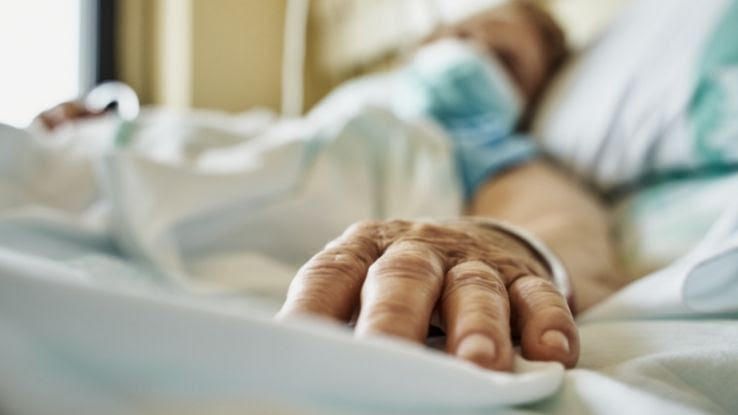Pacific Prime for Beginners
Table of Contents6 Easy Facts About Pacific Prime DescribedSee This Report on Pacific PrimeExcitement About Pacific PrimeGetting My Pacific Prime To WorkPacific Prime for Dummies

This is due to the fact that the information were collected for a period of strong financial performance. Of the approximated 42 million individuals that were uninsured, just about concerning 420,000 (regarding 1 percent) were under 65 years old, the age at which most Americans come to be qualified for Medicare; 32 million were grownups in between ages 18 and 65, about 19 percent of all grownups in this age team; and 10 million were kids under 18 years of age, about 13.9 percent of all kids (Mills, 2000).
These estimates of the number of individuals uninsured are generated from the yearly March Supplement to the Present Populace Survey (CPS), performed by the Census Bureau. Unless otherwise noted, nationwide quotes of people without medical insurance and proportions of the population with various type of insurance coverage are based upon the CPS, the most commonly utilized resource of quotes of insurance policy protection and uninsurance rates.
The Definitive Guide for Pacific Prime

Still, the CPS is specifically beneficial since it produces yearly estimates reasonably promptly, reporting the previous year's insurance policy protection approximates each September, and due to the fact that it is the basis for a regular set of estimates for even more than two decades, permitting analysis of trends in insurance coverage in time. For these reasons, along with the considerable use of the CPS in various other studies of insurance policy coverage that exist in this record, we rely upon CPS quotes, with limitations kept in mind.

The quote of the number of without insurance people increases when a population's insurance coverage condition is tracked for several years. Over a three-year period beginning early in 1993, 72 million people, 29 percent of the united state population, lacked insurance coverage for at the very least one month. Within a single year (1994 ), 53 million individuals experienced a minimum of a month without coverage (Bennefield, 1998a)
6 out of every 10 uninsured grownups are themselves employed. Working does enhance the probability that one and one's family participants will certainly have insurance policy, it is not a warranty. Also members of family members with two permanent wage earners have virtually a one-in-ten possibility of being without insurance (9.1 percent uninsured price) (Hoffman and Pohl, 2000).
The smart Trick of Pacific Prime That Nobody is Discussing
New immigrants make up a significant percentage of people without health insurance policy. One evaluation has connected a significant part of the current development in the dimension of the U.S. uninsured populace to immigrants who showed up in the nation in between 1994 and 1998 (Camarota and Edwards, 2000). Current immigrants (those that came to the United States within the previous 4 years) do have a high price of being without insurance (46 percent), but they and their kids account for simply 6 percent of those without insurance across the country (Holahan et al., 2001).
The connection in between health and wellness insurance and access to care is well established, as recorded later on in this phase. Although the partnership in between medical insurance and health outcomes is neither direct nor simple, a considerable clinical and health solutions study literary works web links medical insurance coverage to better accessibility to care, far better top quality, and boosted individual and population health standing.
Degrees of analysis for analyzing the effects of uninsurance. It concentrates specifically on those without any type of wellness insurance coverage for any size of time.
The 8-Second Trick For Pacific Prime
The issues faced by the underinsured remain in some aspects similar to those faced by the uninsured, although they are usually less severe. international health insurance. Uninsurance and underinsurance, nevertheless, involve distinctly various plan problems, and the methods for addressing them may vary. Throughout this research and the 5 reports to follow, the main focus gets on persons with no health insurance and therefore no support in paying for healthcare beyond what is available via charity and safety web establishments
Health and wellness insurance policy is a powerful factor influencing receipt of care because both patients and doctors reply to the out-of-pocket rate of services - https://issuu.com/pacificpr1me. Wellness insurance policy, nonetheless, is neither needed neither enough to get to medical services. However, the independent and straight impact of medical insurance protection on accessibility to health solutions is well developed.
Others will certainly acquire the healthcare explanation they require even without health and wellness insurance coverage, by paying for it out of pocket or seeking it from companies that use treatment complimentary or at very subsidized rates. For still others, medical insurance alone does not ensure invoice of care as a result of other nonfinancial obstacles, such as an absence of health care service providers in their area, restricted accessibility to transport, illiteracy, or linguistic and cultural distinctions.
The Single Strategy To Use For Pacific Prime
Formal research concerning without insurance populations in the USA dates to the late 1920s and very early 1930s when the Board on the Cost of Treatment produced a collection of records about financing physician office check outs and hospital stays. This problem came to be significant as the varieties of clinically indigent climbed up throughout the Great Clinical depression.